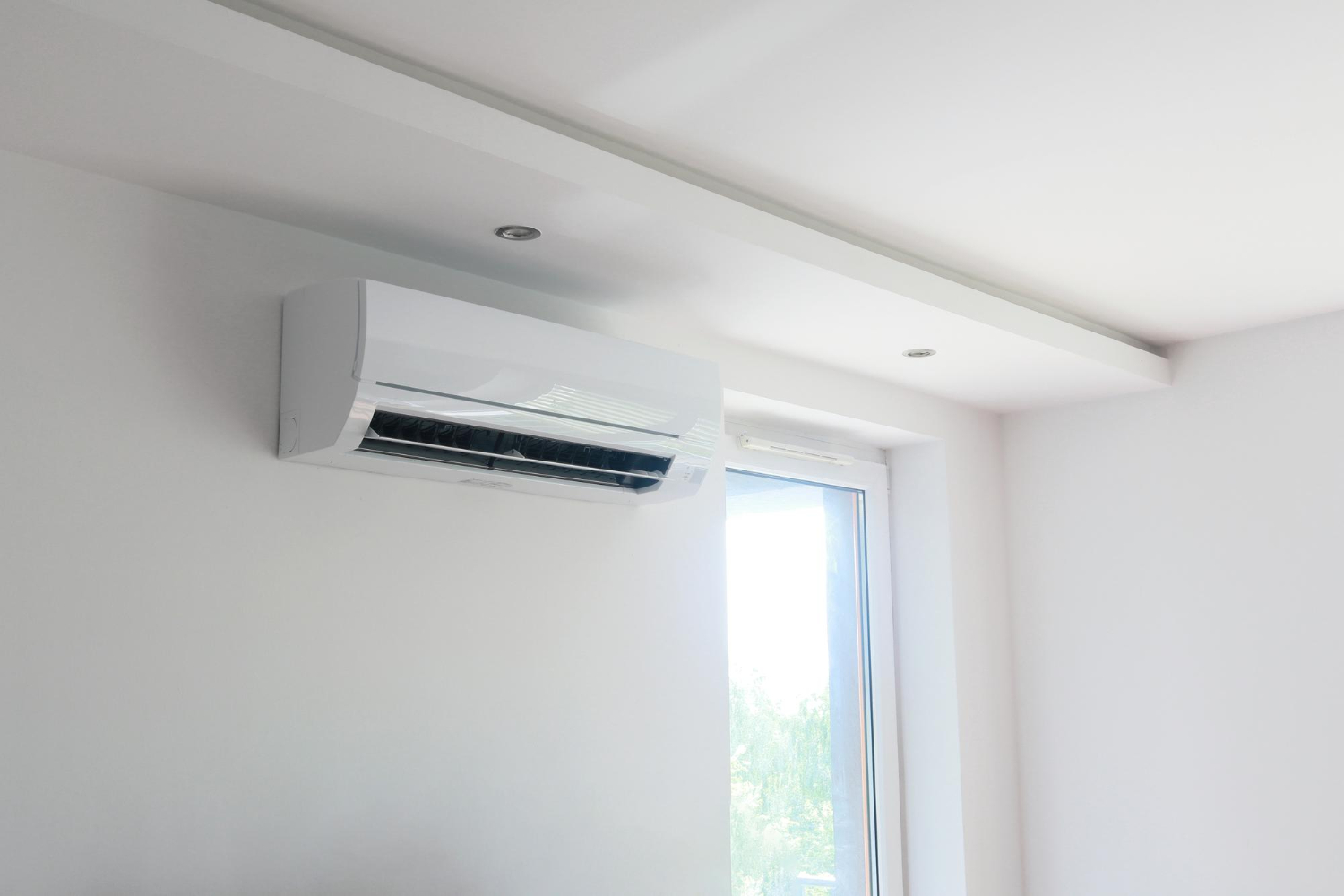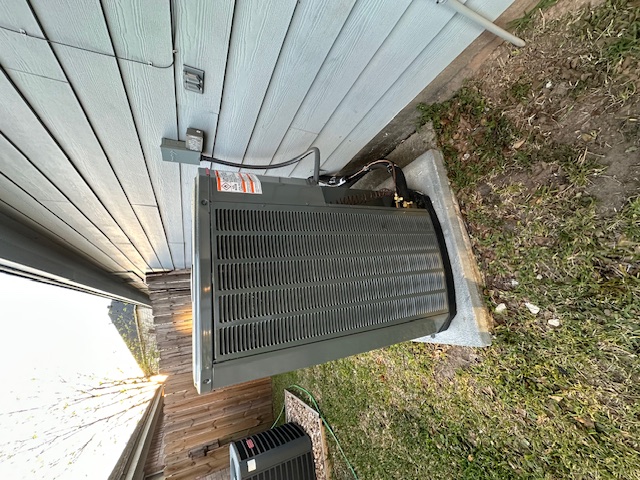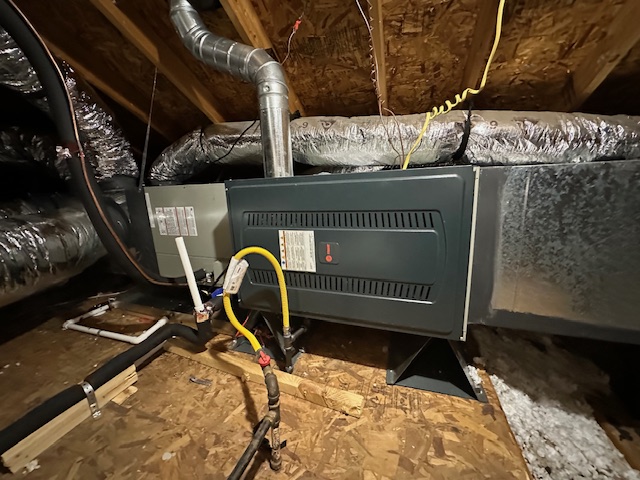Air quality in homes has become a major concern for families dealing with allergies, asthma, and other health issues. Poor indoor air can make people sick and uncomfortable. Many homeowners are looking for ways to clean the air they breathe every day.
UV lights installed in HVAC systems can kill bacteria, viruses, mold, and other harmful particles that regular air filters miss. These special lights use ultraviolet energy to destroy germs as air moves through the heating and cooling system. They work quietly in the background to help create cleaner air throughout the house.
The technology offers real benefits, but it also has limits that people should know about before buying. Learning about proper installation and setup ensures these systems work as well as possible.
In this article, you’ll learn how UV lights for air quality work inside HVAC systems, what they can and can’t do, and how to choose a safe, effective setup for your home.
Here’s what you need to know.
- How UV lights work in your HVAC
- Real world benefits you can feel at home
- Limits, side effects, and the one drawback homeowners miss
- Choosing the right UV air purifier setup
- Getting UV installed the right way in Houston
Keep reading! Understanding how UV lights work and whether they fit specific needs helps homeowners make smart choices about their air quality.
How UV lights work in your HVAC
UV lights use powerful energy rays to destroy harmful microorganisms that grow inside HVAC systems. These systems target specific areas where bacteria and mold thrive, with different placement options affecting how long air gets exposed to the sterilizing light.
What UV light for AC actually targets inside the system
UV lights focus on destroying the DNA of microorganisms that would otherwise multiply in your air conditioning system. The main targets include bacteria, viruses, fungi, and mold spores that collect on wet surfaces.
These germs love the dark, moist areas inside HVAC units. The evaporator coil creates the perfect breeding ground because it stays damp from condensation. Mold and bacteria stick to these surfaces and then spread through your home's air.
UV light breaks down the genetic material in these harmful organisms. This process kills them before they can reproduce or circulate through your ductwork. The light works continuously while your system runs, preventing new growth from taking hold.
Common targets include:
- Mold spores on coils
- Bacteria in drain pans
- Viruses in moving air
- Fungi on wet surfaces
Where the lamp sits and how long it needs to run
UV lamps get installed in specific spots where they can do the most good. The exact location depends on what type of system you choose and what problems you want to solve.
Most coil sterilization units mount near the evaporator coil inside your air handler. They shine directly on the coil surface where mold grows. These lights typically run 24/7 to prevent any organism from getting established.
In-duct systems go inside the main supply or return ducts. Air moves past the light as it flows through your system. The exposure time is shorter, but the light treats all the air moving through your home.
Typical installation spots:
- Near evaporator coils
- Inside return air ducts
- In supply air streams
- Close to drain pans
Professional technicians know the best placement for maximum impact. They consider airflow patterns and exposure time when choosing locations.
The difference between coil sterilization and in duct systems
Coil sterilization systems focus on keeping your HVAC components clean and free from microbial growth. These units mount close to the evaporator coil and run continuously to prevent mold and bacteria from building up on surfaces.
In-duct systems treat the air as it moves through your ventilation system. They install inside the ductwork where moving air passes directly under the UV light. The air gets a quick dose of UV energy as it flows by.
Coil sterilization benefits:
- Prevents mold on coils
- Reduces maintenance needs
- Improves system efficiency
- Runs continuously
In-duct system benefits:
- Treats all circulating air
- Kills airborne germs
- Works with system runtime
- Handles moving particles
Each type serves a different purpose. Coil systems keep your equipment clean while in-duct units sanitize the air you breathe.
Real world benefits you can feel at home
UV lights deliver three main improvements that homeowners notice quickly: reduced odors from cleaner air handling systems, lower energy bills from more efficient equipment, and relief from allergies in bedrooms and living spaces.
Fewer odors and biofilm for steadier airflow and comfort
UV lights target the source of many household odors by killing bacteria and mold that grow inside air ducts and HVAC systems. These microorganisms create biofilm, a sticky layer that traps dirt and produces musty smells.
When UV lights eliminate biofilm, air flows more smoothly through the system. This means rooms heat and cool more evenly. The constant air circulation also prevents hot and cold spots that make spaces uncomfortable.
Common odor sources UV lights eliminate:
- Mold growth in ductwork
- Bacteria buildup on coils
- Pet dander trapped in biofilm
- Cooking odors that stick to surfaces
Homeowners typically notice fresher air within 2-4 weeks of installation. The improvement is most obvious in basements, bathrooms, and rooms that previously felt stuffy or had lingering smells.
Cleaner coils that boost efficiency and reduce maintenance
HVAC coils collect dust, pollen, and organic matter that feeds bacteria and mold. This buildup forces the system to work harder to move air and maintain temperatures.
UV lights kill these organisms before they can multiply on coil surfaces. Clean coils transfer heat better and allow air to pass through easily. This reduces the workload on fans and compressors.
Efficiency improvements homeowners see:
- 5-15% lower energy bills
- Fewer system breakdowns
- Longer time between filter changes
- Reduced professional cleaning needs
The energy savings become apparent in the first full season after installation. Systems with UV lights typically need coil cleaning half as often as those without UV protection.
Allergy relief and fewer irritants for sensitive rooms
UV lights reduce airborne allergens by killing mold spores, bacteria, and viruses as they pass through the HVAC system. This is especially helpful in bedrooms where people spend 6-8 hours breathing the same air.
Family members with asthma or allergies often experience fewer symptoms within a month. Morning congestion decreases when UV lights prevent overnight buildup of irritants in sleeping areas.
Allergy improvements residents report:
- Less morning stuffiness
- Reduced nighttime coughing
- Fewer headaches from air quality
- Better sleep quality
Children and elderly family members typically show the most improvement since their respiratory systems are more sensitive to air quality changes. Pet owners also notice reduced reactions to dander and fur.
Limits, side effects, and the one drawback homeowners miss
UV lights work well in some situations but fail in others, can produce harmful ozone gas, and cannot match the complete air cleaning power that full air purifier systems provide.
Do UV lights in HVAC really work and when results vary
UV lights kill germs and mold on surfaces inside HVAC systems. They work best when microorganisms stay in the UV light beam for enough time.
When UV lights work well:
- Killing mold on cooling coils
- Reducing bacteria in slow-moving air
- Treating air that moves slowly through the system
When results vary:
- Fast-moving air through ducts
- Particles that move quickly past the light
- Systems with poor air circulation
The lights only work on what they can reach directly. Air that moves too fast through the system does not get enough UV exposure to kill all germs.
Distance matters too. UV light gets weaker the farther it travels from the bulb. Germs at the edge of the light beam may survive.
Side effects to consider and why ozone free matters
The U.S. EPA warns that ozone is a lung irritant and no federal agency has approved ozone-generating ‘air cleaners’ for use in occupied spaces—so homeowners should select ozone-free UV systems only.
Some UV lights create ozone gas as a side effect. Ozone can cause breathing problems and lung irritation.
Health risks from ozone:
- Chest pain
- Cough and throat irritation
- Trouble breathing
- Worsening of asthma symptoms
Homeowners should only buy ozone-free UV lights. These use a different type of UV light that does not create ozone.
The lights can also damage some HVAC parts over time. Plastic components may break down faster when exposed to UV rays.
Regular bulb replacement is needed. Most UV bulbs lose their germ-killing power after 12 months, even if they still produce light.
What UV cannot do compared to full air purifier systems
According to the U.S. EPA, typical residential UVGI units have limited effectiveness on some microbes and should be used with, not instead of, filtration, since effective inactivation often requires higher UV exposure than most home units provide.
UV lights only kill living things like germs and mold. They cannot remove dust, pollen, pet hair, or chemical smells from the air.
What UV lights miss:
- Dust and dirt particles
- Pollen and allergens
- Pet dander
- Smoke and odors
- Chemical vapors
Full air purifier systems use multiple filters and cleaning methods. They combine HEPA filters, carbon filters, and sometimes UV lights together.
A single UV light cannot match this complete approach. Homeowners who want the best air quality need more than just UV treatment.
Air purifier systems catch particles of all sizes. They also remove gases and smells that UV light cannot touch. This makes them much more effective for overall air cleaning.
Choosing the right UV air purifier setup
Getting the right UV air purifier setup means matching lamp configuration to room size, planning for bulb replacement and safety features, and combining UV technology with proper filtration systems.
Single lamp vs dual lamp and how to match system size
Single lamp UV air purifiers work well for rooms up to 400 square feet. These units typically cost less and use minimal energy while still killing bacteria and viruses effectively.
Dual lamp systems handle larger spaces from 400 to 800 square feet. They provide double the UV-C exposure time, which means better pathogen elimination in high-traffic areas.
Room size matching guidelines:
- Small rooms (150-300 sq ft): Single 15-20 watt lamp
- Medium rooms (300-500 sq ft): Single 25-36 watt or dual 15 watt lamps
- Large rooms (500-800 sq ft): Dual 25-36 watt lamps
Check the manufacturer's coverage area ratings before buying. Some air purifier with uv lights models overstate their effective range.
Ceiling height matters too. Rooms taller than 9 feet need more powerful lamps or longer exposure times to clean all the air properly.
Bulb life, safety shields, and maintenance windows
UV-C bulbs typically last 9,000 to 12,000 hours of operation. Most residential units run continuously, so expect bulb replacement every 12-18 months.
Quality UV air purifier models include safety shields that block harmful UV rays from escaping. Never operate units without proper shielding, as direct UV-C exposure damages skin and eyes.
Look for systems with easy bulb access panels. Some designs require complete disassembly for maintenance, which creates hassle and extra costs.
Essential safety features:
- Automatic shutoff when access panel opens
- UV-proof viewing windows
- Child safety locks on maintenance doors
- Clear bulb replacement indicators
Set calendar reminders for bulb changes. Expired bulbs look normal but lose effectiveness gradually, leaving harmful microorganisms alive.
Some premium models include bulb life monitors that track operating hours and alert users when replacement time approaches.
Pairing UV with filtration and ventilation for best results
UV lights kill germs but don't remove dust, pollen, or chemical odors. The best results come from combining UV technology with HEPA filtration and proper air circulation.
Multi-stage systems work most effectively. Air first passes through pre-filters to remove large particles, then HEPA filters catch smaller allergens, and finally UV lamps kill remaining pathogens.
Recommended system combinations:
- Pre-filter + UV: Basic setup for germ control only
- HEPA + UV: Complete particle and pathogen removal
- Carbon + HEPA + UV: Full spectrum air cleaning including odors
Proper air movement helps UV systems work better. Slower airflow gives UV lamps more time to kill pathogens, but too slow reduces overall air cleaning capacity.
Position UV air purifiers near return air vents or central locations for maximum air circulation. Avoid corners where air moves slowly and cleaning effectiveness drops.
Getting UV installed the right way in Houston
Professional installation requires careful planning and the right technician expertise. Houston homeowners need to ask specific questions and understand maintenance requirements to get the best results from their UV system.
What Horizon Air Solutions checks before installation
Licensed HVAC contractors examine several key areas before installing UV lights. They measure the existing ductwork to determine proper placement and sizing requirements.
Technicians inspect the current HVAC system for compatibility issues. They check electrical connections and available power sources near the indoor coil area.
Pre-installation checklist includes:
- Ductwork measurements and access points
- Indoor coil size and configuration
- Electrical requirements and connections
- Airflow patterns and circulation rates
- Existing air quality equipment
The contractor evaluates which UV light type works best for the specific system. Single or dual light configurations depend on the indoor coil size and home square footage.
They also assess the installation location for maximum effectiveness. UV lights must be positioned where they can target the indoor coil directly without obstructions.
Questions to ask so you avoid the wrong product
Homeowners should verify the contractor's UV technology training and certification. Ask about their experience with similar HVAC systems and UV installations.
Essential questions include:
- What UV light intensity is recommended for this system size?
- How long do the bulbs typically last before replacement?
- What warranty coverage comes with the installation?
- Are there different UV light options for specific air quality concerns?
Request clear pricing details upfront. Compare quotes from multiple licensed contractors to ensure competitive rates and quality service standards.
Ask about the installation timeline and any disruption to existing HVAC operation. Professional installers should complete most residential UV installations within a few hours.
Verify that the contractor follows manufacturer guidelines and local building codes. They should provide documentation of proper installation procedures.
Simple maintenance tips that keep performance strong
UV bulbs require replacement every 12 to 18 months for optimal performance. Most bulbs continue producing visible light after losing UV effectiveness.
Regular maintenance tasks:
- Replace UV bulbs annually during HVAC tune-ups
- Clean dust and debris from light fixtures quarterly
- Check electrical connections for loose wires
- Verify proper bulb positioning after filter changes
Schedule professional inspections during routine HVAC maintenance visits. Technicians can test UV light output and clean accumulated dust from fixtures.
Keep replacement bulbs away from direct sunlight before installation. Handle new bulbs carefully to avoid fingerprints on the glass surface.
Monitor indoor air quality improvements after installation. Most homeowners notice reduced odors and fewer respiratory issues within the first few weeks of operation.
Conclusion
UV lights offer a proven way to improve indoor air quality when used correctly. These devices destroy harmful bacteria, viruses, and mold that traditional filters cannot catch.
UV lights work best as part of a complete air cleaning system. They should be combined with quality filters and proper ventilation for maximum results.
Professional installation ensures the lights are placed correctly and safely. UV-C lights need proper positioning to work effectively without causing harm to people or pets.
The technology is most valuable for homes with family members who have allergies or breathing problems. It also helps in areas with high humidity where mold grows easily.
The science supports UV light technology for air purification. Many HVAC professionals recommend these systems for homeowners seeking cleaner indoor air.
UV lights do not replace good ventilation or source control. They add another layer of protection against airborne contaminants that can affect health and comfort.
For families prioritizing indoor air quality, UV lights represent a worthwhile investment when properly integrated into existing HVAC systems.
Schedule a UV-C assessment and installation with a licensed HVAC technician to select an ozone-free system, optimize placement, and improve your home’s indoor air quality safely and effectively.











